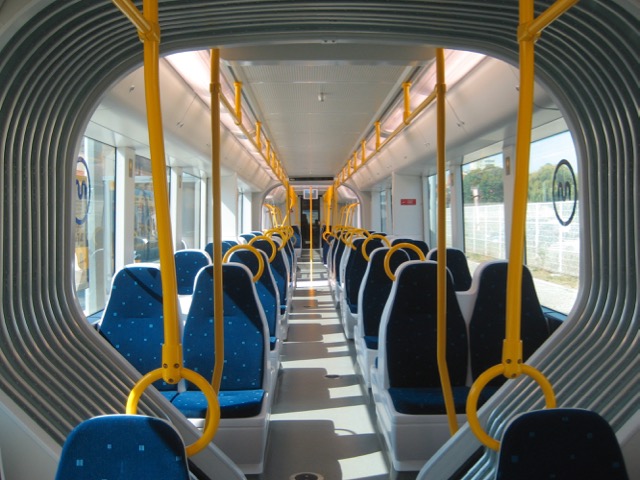|
Póvoa De Varzim Station (Porto Metro)
Póvoa de Varzim is a light rail station on the Porto Metro system, and a former railway station on the Porto to Póvoa and Famalicão railway line, Porto to Póvoa and Famalicão line. It is located in the Póvoa de Varzim, municipality of Póvoa de Varzim, Portugal. Today the station is the terminus of line B of the Metro, which provides a direct connection to the centre of the Porto, city of Porto. It was originally opened in 1875, closed in 2002, and reopened as a Metro station in 2006. History The original railway station was built on the former narrow gauge Porto to Póvoa and Famalicão railway line, Porto to Póvoa and Famalicão line. This station was opened on 1 October 1875 as the northern terminus of the line from , originally built to a gauge of . The line was extended, in stages, beyond Póvoa de Varzim, reaching its ultimate terminal at on 12 June 1881. In 1927 the railway line was re-gauged from 900mm to , and in 1938 it was extended from Porto-Boavista station ... [...More Info...] [...Related Items...] OR: [Wikipedia] [Google] [Baidu] |
Porto Metro
The Porto Metro () is a light rail network in Porto, Portugal and a key part of the city's public transport system. Having a semi-metro alignment, it runs underground in central Porto and above ground into the city's suburbs while using low-floor tram vehicles. The first parts of the system have been in operation since 2002.Webb, Mary (ed.) (2009). ''Jane's Urban Transport Systems 2009–2010'', p. 277. Coulsdon, Surrey (UK): Jane's Information Group. . The network has 6 lines and reaches seven municipalities within the metropolitan Porto area: Porto, Gondomar, Maia, Matosinhos, Póvoa de Varzim, Vila do Conde and Vila Nova de Gaia. It currently has a total of 85 operational stations across of double track commercial line. Most of the system is at ground level or elevated, but of the network is underground. The system is run by ViaPORTO. The Porto Metro has received the Veronica Rudge Green Prize in Urban Design from Harvard University's Graduate School of Design in ... [...More Info...] [...Related Items...] OR: [Wikipedia] [Google] [Baidu] |
Narrow Gauge
A narrow-gauge railway (narrow-gauge railroad in the US) is a railway with a track gauge (distance between the rails) narrower than . Most narrow-gauge railways are between and . Since narrow-gauge railways are usually built with Minimum railway curve radius, tighter curves, smaller structure gauges, and lighter Rail profile, rails; they can be less costly to build, equip, and operate than standard- or broad-gauge railways (particularly in mountainous or difficult terrain). Lower-cost narrow-gauge railways are often used in mountainous terrain, where engineering savings can be substantial. Lower-cost narrow-gauge railways are often built to serve industries as well as sparsely populated communities where the traffic potential would not justify the cost of a standard- or broad-gauge line. Narrow-gauge railways have specialised use in mines and other environments where a small structure gauge necessitates a small loading gauge. In some countries, narrow gauge is the standard: Ja ... [...More Info...] [...Related Items...] OR: [Wikipedia] [Google] [Baidu] |
Railway Stations In Portugal Opened In 1875
Rail transport (also known as train transport) is a means of transport using wheeled vehicles running in tracks, which usually consist of two parallel steel rails. Rail transport is one of the two primary means of land transport, next to road transport. It is used for about 8% of passenger and freight transport globally, thanks to its energy efficiency and potentially high speed.Rolling stock on rails generally encounters lower frictional resistance than rubber-tyred road vehicles, allowing rail cars to be coupled into longer trains. Power is usually provided by diesel or electric locomotives. While railway transport is capital-intensive and less flexible than road transport, it can carry heavy loads of passengers and cargo with greater energy efficiency and safety. Precursors of railways driven by human or animal power have existed since antiquity, but modern rail transport began with the invention of the steam locomotive in the United Kingdom at the beginning of the 19th c ... [...More Info...] [...Related Items...] OR: [Wikipedia] [Google] [Baidu] |


